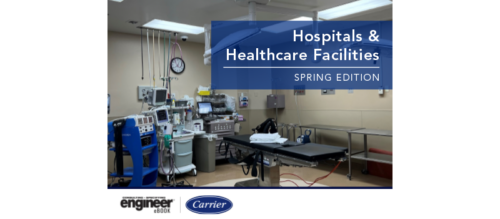What are hospitals doing to connect and protect patients
The following trends were noted within the healthcare construction community as at PDC Summit.
Last week the healthcare construction community came together in Phoenix at #PDCSUMMIT. Issues like the impending USP 797 and 800 deadline, as well as anti-ligature concerns in behavioral health, were, of course, a huge focus for the annual American Society for Healthcare Engineers (ASHE) summit. In addition, we noticed the following trends throughout the education sessions:
Safety
Several presentations focused on “Leading the Way to Zero.” Essentially, the goal is to reduce errors in regulatory compliance and help hospitals become high-reliability organizations (HRO). As an HRO, the hospital takes specific steps toward quality and developing a great workplace culture to admit mistakes and separate blameless errors from the blameworthy. With higher quality standards for patients and staff, there is an expectation that financial outcomes will also improve as a result.
Cyber Security
As the Internet of Things (IOT) has grown in popularity, even the healthcare industry is seeing a greater emphasis on being “connected.” Everything from cloud-based medical records, to the building automation system (BAS) is being brought online so that facility staff can access it quickly. Similarly, many hospitals are looking to integrate these systems into a single mobile device that allows patients to control lighting, HVAC, nurse call, and other systems from their beds. However, if the hospital network is not secured properly it’s vulnerable. There is a risk of losing control of these systems or exposing medical records. To mitigate this threat, it’s critical to have a discussion with designers and hospital personnel to identify and address vulnerabilities and elevate the importance of cybersecurity.
Healthcare Acquired Infections (HAIs)
HAIs are a hot topic these days — and everyone is taking measures to prevent them. In the built environment, we focus on minimal, easy to clean surfaces in spaces that support the most effective procedures. Minimizing transmission through patient lifts in all patient rooms, standardized work environments and same-handed rooms, the use of newer hands-free technologies, and bacteria-killing UV lights and/or robots are just some of the methods facilities are implementing to try to solve this issue. A case study showed that understanding how the hospital functions can inform strategic design initiatives to help minimize other potential transmission scenarios. There was also a great discussion on methods of transmission that centered on the importance of hand-washing and location of hand sanitizing stations.
Prefabrication
Prefabricating specific items that are replicated, such as headwalls, footwalls, and patient toilet rooms, often aids with constructability and speed to market. A poll of the audience showed an overwhelming majority (97 percent) of the conference attendees believed some form of offsite fabrication of standardized components is beneficial. More than half (64 percent) of those present indicated they had already used this method on a construction project.
The healthcare industry has been on quite a ride in the last decade. Facilities are adapting faster than ever for the changing political and regulatory environment. The content of #PDCSUMMIT clearly emphasized patient safety and protecting their health and wellness through planning, design, and construction. The world of healthcare continues to change and we at Henderson Engineers are prepared to help provide a healing environment for patients.
To see our healthcare projects, click here.
This article originally appeared on Henderson Engineers’ website. Henderson Engineers is a CFE Media content partner.
Original content can be found at www.hendersonengineers.com.
Do you have experience and expertise with the topics mentioned in this content? You should consider contributing to our CFE Media editorial team and getting the recognition you and your company deserve. Click here to start this process.



